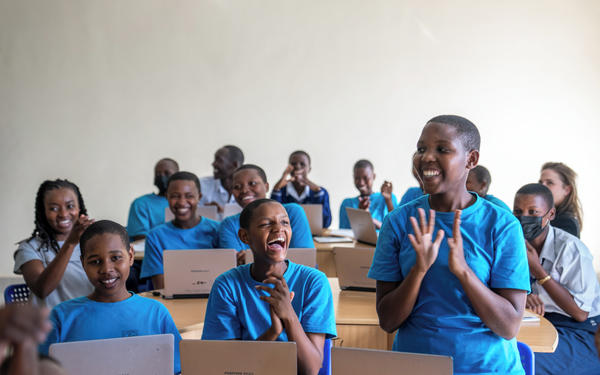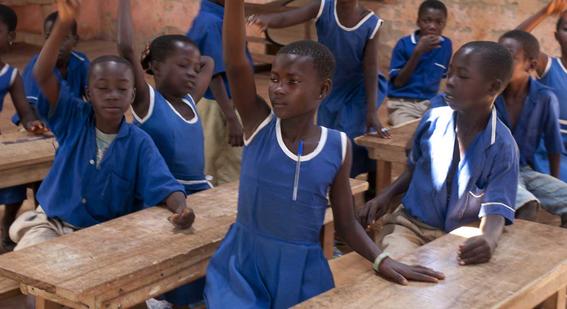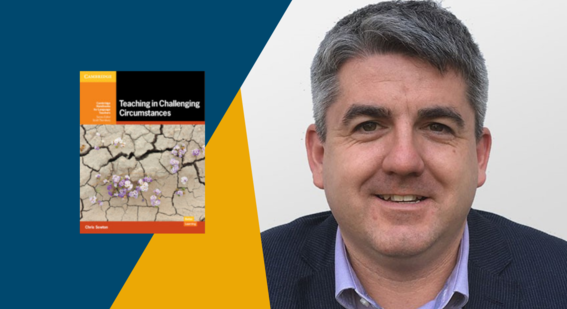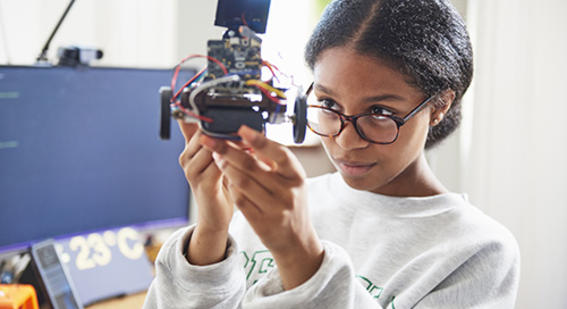International Mother Language Day: Multilingualism and minority languages in your education system
Jenny Wye is Professional Development Solutions Manager at Cambridge, working with governments across the world to develop and deliver teacher professional development programmes. Before joining Cambridge, she worked as an English teacher and Head of Department for 15 years, leading a team who supported learners of English as an additional language (EAL). During Jenny’s time in the classroom, she worked with learners from five continents, over 100 countries, speaking over 75 languages.
This International Mother Language Day, she shares her recommendations for what education leaders should be thinking about.

The day Emin joined my class, we weren’t sure we would be able to find anyone in the school community who would be able to communicate with him - despite having 70 languages recognised in our student body. He had recently moved to the UK from a village in rural Azerbaijan, speaking a local dialect which made it tricky for him to use standard dictionaries. Amazingly, Emin perked up when a Turkish classmate spoke. They smiled at one another, connected in an instant by the familiar sounds even if the languages were only mutually intelligible.
Access to education in minority languages
Though at face value, it may make sense for schools to operate in a national language, according to UNESCO, “globally 40 percent of the population does not have access to an education in a language they speak or understand.”
The majority of living languages across the world belong to Indigenous peoples, representing not just linguistics, but unique cultures and perspectives. Historically, Indigenous peoples have been forced to learn majority languages to access civil rights and public services, and their people, languages, and cultures have been subject to violence and discrimination. The UN reports that “every two weeks a language disappears, taking with it an entire cultural and intellectual heritage.”
UNESCO’s World Atlas of Languages highlights that of 7,000 living languages in the world today, 65 are “considered safe”. Though Google can sometimes seem ubiquitous, just 133 languages are available on Google Translate.
Embracing the International Decade of Indigenous Languages
We have no time to lose to better support Indigenous peoples and languages. When we do, exciting things can happen. Recently the New York Times reported the inspiring story of Blas Jaime, one of the last remaining speakers of the Chaná language, long believed to be extinct.
In 2019, the UN celebrated the International Year of Indigenous Languages. It gathered data and information on the situations of Indigenous peoples and their languages around the world.
This led to the International Decade of Indigenous Languages, which will run from 2022 to 2032. Within this initiative, global, national, and local partners will celebrate the diversity and heritage of Indigenous people and languages, while also gathering data and raising awareness of issues that harm these communities.
It also hopes to recognise the crucial role they play in the world and society and explore ways people and organisations can partner with and support them.
Multilingualism education opportunities
If you were born into a majority language speaking family, you might easily take for granted the barriers others face when accessing education and other public services.
It may seem sensible to you that those outside of the majority bear the responsibility for multilingualism. This becomes evident from the sheer fact that of approximately 2 billion English speakers across the world, only 400 million of them have English as their mother tongue. But, the more people who engage with minority languages, the more familiar, more accessible, and more obtainable multilingualism becomes.
Multilingualism itself is desirable for the many benefits of language learning. Whether multilingual from birth or learning a language later in life, language learning supports healthy brain development and positively impacts your academic performance, concentration, memory, communication skills, and creativity.
On top of these personal benefits, multilingualism also benefits communities. This is most clearly seen in cities where diversity (including linguistic diversity) opens up opportunities for meaningful cultural exchanges that enrich the lives of all and benefit the community socially and economically.
What can governments and education organisations do to support children with different or minority languages?
There are many things that governments and education organisations can do to support Emin, and the millions of children like him around the world. Not to mention the teachers that support them and wider communities. You could consider:
- Championing policy and programmes that support teacher training in mother tongue pedagogy and culturally sensitive and relevant curriculums. Research shows that using mother tongue in the classroom, particularly where the language of instruction is not the community language, has positive effects on learning outcomes and community development.
- Offering print and digital resources in minority languages. This would widen access to digital tools and other teaching and learning materials such as textbooks and dictionaries. This has the potential to transform entire communities who have never had access to these learning aids before.
Supporting initiatives, organisations, and research that engages meaningfully with Indigenous communities. In many places in the world, society does not appropriately value Indigenous communities for the contributions they make not valued appropriately for the contributions they make to society. Inclusive practices that recognise and respect minority groups provide valuable learning opportunities for everyone involved.
Not only do these policies and practices have the potential of supporting minority language communities, but of opening avenues for majority language users to learn from Indigenous communities.
What might this look like in the classroom?
Bringing it back to my classroom, what are some of the things you can do, or things you should be looking out for in policies, to help young people feel welcome, seen and valued?
- Empower teachers with knowledge so they’re well placed to welcome students from other languages and cultures. Knowing simple things like whether students will feel comfortable making eye contact with an adult will help set the tone for a first meeting. If possible, bringing in community language members to support the young person can give them a much-needed safe space in the school community.
- Frame multilingualism positively in all school policies and processes. Look out for anything construing multilingualism as a detriment e.g., dumbing down a curriculum, excluding minority language students from activities, sitting them apart from other students, or even saying “they don’t speak English,” (or whatever the majority language is) particularly in their presence. A simple swap to “they’re learning English” can be very powerful.
- Include minority language students in all aspects of school life. Perhaps they aren’t ready to read aloud during assembly but can help handout textbooks or supplies during lesson time. Building up their comfort and confidence in the new environment will support their language development and overall wellbeing.
- Finally, allow learners to speak and work in their mother tongue if they wish to. Review restrictive school policies that limit students to working only in a majority language; research shows these practices have detrimental effects on learner development and their identity. You can read more about supporting multilingual learners here.
This International Mother Language Day, let’s celebrate all native languages, while also looking for ways to make space at the table for the people who speak minority languages and embrace multilingualism.
You can read more about benefits of multilingualism in the classroom here



